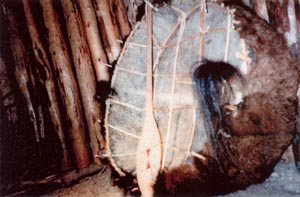Ever since I can remember, my paternal grandmother would always have a very nice, sit-down dinner at her house the night before Thanksgiving. All of our family would come from Vallejo and San Diego to celebrate the holidays with everyone. It is a very special tradition because we don't normally see each other through out the year, except for the holidays and other special occasions. Its nice because my grandparents from my mother's side always attend as well since both my grandparents and my family all live in Sunnyvale. I always loved having this special dinner because i get to have both sides of my family at a dinner table. To make this meal even more special, my paternal grandmother would alway make her famous seafood pasta- her own version of fruitti de mare and her Italian wedding soup. I wait all year long for this meal because we only have it once a year. Although she passed away 8 years ago, our family still keeps the tradition in remembrance of my grandmother.
Here is the recipe for her famous seafood pasta dish:
Ingredients:
clams
mussels
shrimp
crab
scallops
squid
mushrooms
white onion
linguine noodles
Tomato sauce:
- 1 (14 1/2 ounce) can crushed tomatoes
- 2 garlic cloves, chopped
- 1 small onion, chopped
- 1/4 red capiscum, chopped
- 1/2 ground basil
- 1/2 ground thyme
- 1 pinch oregano
- salt and pepper
Directions:
1. Take all the ingredients for the sauce and place them into a pot and boil it for about 20-30 minutes. After the sauce is made, we leave it off to the side on a low temperature or simmer, waiting for the seafood.2. Begin boiling the noodles as the linguine noodles take a little longer. Then strain the noodles when its done boiling.
3. We clean and cut all the seafood, then we cook it in a pan for a few minutes with some olive oil so that its almost cooked- but not fully cooked as it will cook more in the sauce.
4. After frying the seafood in a pan, place it into the sauce. Then do the same with mushrooms and a small white onion.
5. Once the sauce it put together and the pasta is done boiling, we put some of the sauce without the seafood and mix it with the noodles, then place it on the dinner table and serve ourselves pasta and place the seafood sauce on top (as mixing it all together would be messy with long noodles).
I found this picture online but it looks very similar to my grandmothers dish!!



